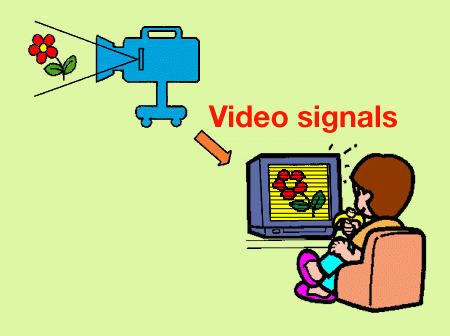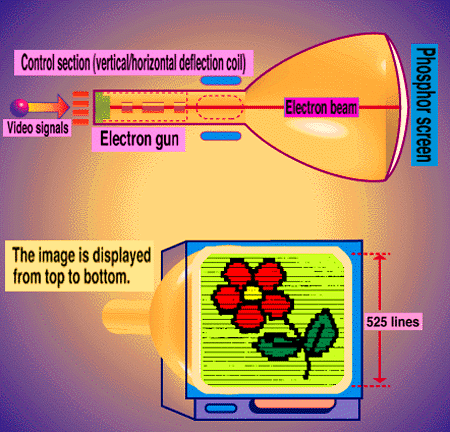
 |
|
 |

| Television cuts an image from a TV camera into thin thread-like slices, and transmits them one at a time sequentially. At the receiving end these slices are collected, arranged in order, and displayed on a cathode ray tube. This allows as many as 30 still pictures to be recorded per second and projected in succession, giving the appearance of motion. |
How Does a Television Work?
|
 |
|
 |


|
Return to the Gakushukan Home Page | ||

|
Back | Forward |

|